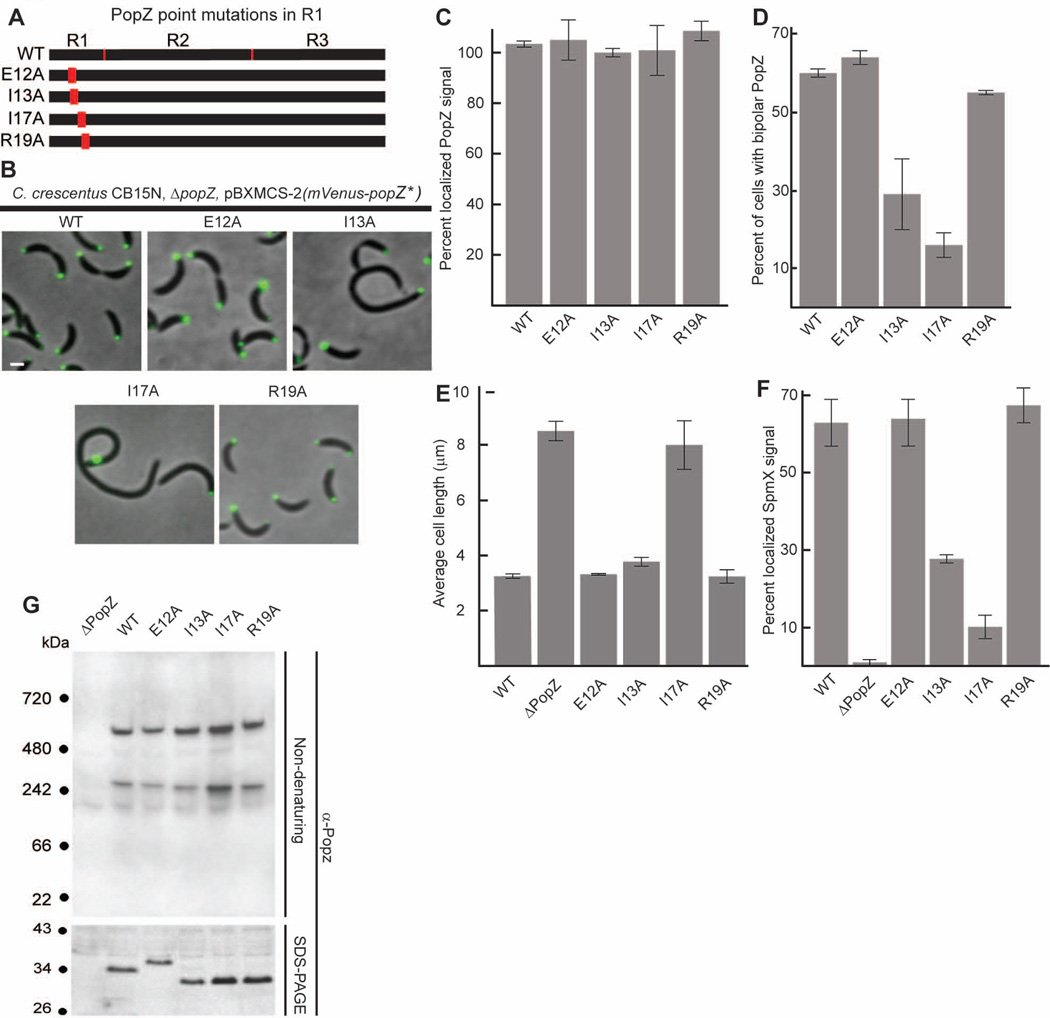Figure 5.
The N-terminal R1 region of PopZ is necessary for bi-polar distribution.
A. Schematic of N-terminal PopZ amino acid substitutions.
B. Images of strains expressing mVenus-PopZ (AP323) (WT), mVenus-PopZ E12A (AP316), mVenus-PopZ I13A (AP313), mVenus-PopZ I17A (AP314), and mVenus-PopZ R19A (AP315) in a ΔpopZ background. Venus fluorescence (green) overlays the phase contrast image (grayscale).
C. Percent of polar localized PopZ signal in B.D. Average cell length in strains expressing WT PopZ (GB699), no PopZ (GB255), PopZ E12A (GB899), PopZ I13A (GB897), PopZ I17A (GB898), and PopZ R19A (GB900).
E. Percent of polar localized SpmX-mCherry signal in PopZ variant strains. Strains in B are modified to express SpmX-mCherry from the chromosomal spmX promoter. Data from AP253, AP236, AP292, AP293, AP290, and AP291 are presented. Corresponding images are in Supplementary Figure S5.F. Percent of cells exhibiting bi-polar localization of Venus-PopZ, in strains shown in panel B.
G. Electrophoretic migration of PopZ N-terminal mutant proteins. Whole cell lysates of strains in panel D were resolved on native and denaturing gels, then probed with anti-PopZ sera by immunoblotting.
In images, Bar = 1µm. In graphs, error bars represent SEM from 2 separate experiments of 30–60 cells each.

